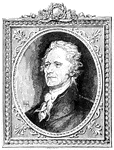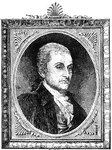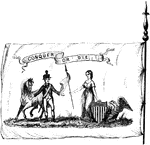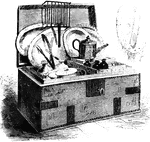
Cavalry of General Banks
"A reconnoitring detachment of General Banks's cavalry, Hyattstown, Md., in the distance. There are…
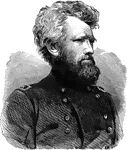
General Robert H. Milroy
"General Milroy, born in Washington County, Ind., June 11th, 1816, was graduated at Norwich University,…

Admiral Silas H. Stringham
"Rear admiral Stringham, born in Middletown, Orange County, N. Y., November 7th, 1798; died in brooklyn,…
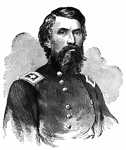
General John Buford
"General Buford, born in Kentucky in 1825, died in Washington, D. C., December 16th, 1863, was graduated…
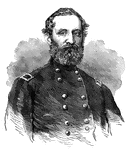
General George W. Morgan
"General Morgan, born in Washington County, Pa., September 20th, 1820, died at Old Point Comfort, Va.,…

Thoroughfare Gap
"Thoroughfare Gap, Va., a pass in the mountains on the Manassas Gap Railroad, near Strasburg, held by…
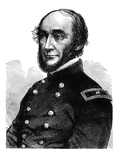
General George W. Cullum
"General Cullum, born in New York city, February 25th, 1809, died in New York city, February 28th, 1892,…

Battle of Stone River
"Battle of Stone River, Tenn. Decisive charge and capture of Byrne's Confederate battery by the Seventy-eighth…

Garibaldi Guards
"Camp of the Garibaldi Guards, Colonel D'utassy, near Roche's Mills, Va., Potomac River in the distance.…
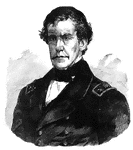
Rear Admiral Charles Wilkes
"Rear Admiral Wilkes, born in New York city, April 3rd, 1798, died in Washington, D. C., February 8th,…
Commissariat Depot
"Commissariat Depot of the United States Army of the Rappahannock at Manassas, Va. Our sketch shows…
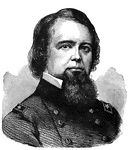
General John Pope
"General Pope, born in Louisville, Ky., March 16th, 1822, was graduated from the United States Military…
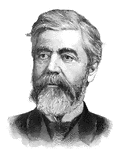
General Walter Q. Gresham
"General Gresham, Secretary of State, born near Lanesville, Harrison county, Ind., March 17th, 1832;…
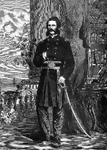
General Lafayette C. Baker
"General Baker, Chief of the United States Secret Service, born in Stafford, Genesee County, N. Y.,…
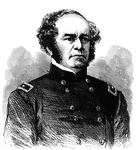
General Henry W. Benham
"General Benham, born in Connecticut in 1817, died in New York June 1st, 1884, was graduated from the…
Recrossing the Rappahannock
"The war in Virginia. General Meade recrossing the Rappahannock, October, 1863, before Lee's advance.…

Fort Stevens
"The operations near Washington, scene of the fight in front of Fort Stevens, July 12th-13th, 1864.…
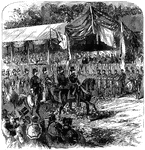
Grand Review
"The Grand Review at Washington, D. C., May 24th, 1865- President Johnson, Lieutenant General Grant…
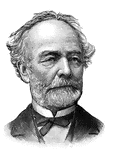
General Joseph E. Johnston
"General Johnston, born in Cherry Grove, near Farmville, Va., February 3rd, 1807; died at Washington,…
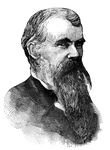
General William Mahone
"General Mahone, born in Southampton County, Va., December 1st, 1826; died at Washington, D. C., October…
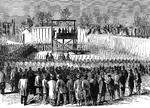
Captain Wirz's Execution
"Execution of Captain Wirz at Washington, D. C., Friday, November 10th, 1865."— Frank Leslie, 1896
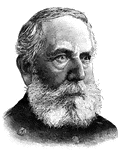
General William B. Hazen
"General Hazen, born in West Hartford, Vt., September 27th, 1830; died in Washington, D. C., January…

Funeral Cortege
"The funeral cortege, at boston, Mass., of the Sixth Massachusetts soldiers killed at Baltimore. The…

Rhode Island Regiments
"Rhode Island Regiments embarking at Providence for New York and Washington. Within five days after…

White House Landing
"White House Landing, Pamunkey River, Va., the Grand Depot of the Commissariat and Ordinance Department…
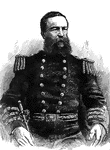
Admiral David Dixon Porter
"Admiral Porter, born in Chester, Delaware County, Pa., June 8th, 1813; died in Washington, D. C., February…

Naval Practice
"Naval Practice Battery, navy yard, Washington, D. C. We present to our readers a sketch of what was…
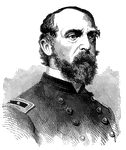
General George G. Meade
"General Meade, born in Cadiz, Spain, December 31st, 1815, died in Philadelphia, Pa., November 6th,…
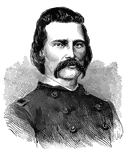
General John A. Logan
"General Logan, born in Jackson County, Ill., February 9th, 1826, died in Washington, D. C., December…
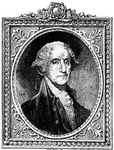
George Washington
"George Washington, after a painting by Gilbert Stuart. (The Gibbs Portrait.)"—E. Benjamin Andrews,…
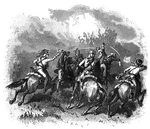
Tarleton encounter
"The encounter between Tarleton and Colonel Washington."—E. Benjamin Andrews, 1895
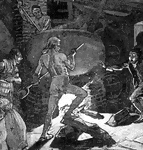
Illicit Distillers
"Illicit Distillers warned of the approach of Revenue Officers."—E. Benjamin Andrews, 1895
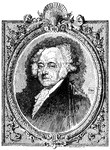
John Adams
"John Adams, a once proud reservist, was popular, and anti-French feeling irresistible."—E. Benjamin…
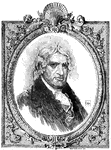
George Clinton
(1739-1812) George Clinton, was governor of New York (1777-1795} and fourth vice president of the United…
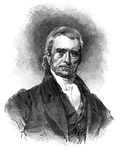
John Marshall
"John Marshall was dispatched by President Adams as a last overture for peace with France."—E.…

Union Terminal
Cross Section of umbrella train shed, showing clearance lines, Union Terminal, Washington, D.C.
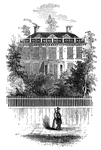
Schuyler's Mansion
Schuyler's Mansion. This view is from Schuyler Street. The edifice is of brick, having a closed octagonal…
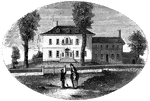
Morristown
Washington's head-quarters at Morristown. This view is from the forks of the road, directly in front…
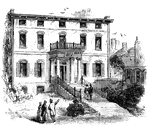
Province House
"The Province House. The Province House, the residence of the colonial governors, is still standing,…
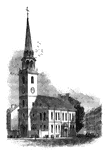
Old South
"The Old South. This venerable and venerated edifice, that stood through all the storms of the Revolution,…
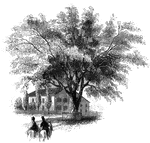
Washington Elm
"The Washington Elm. The horse seen in this sketch is one of the oldest in Cambridge, having been built…

Floating Battery
"American Floating Battery. I am indebted to the kindness of Peter Force, Esq., of Washington city (editor…
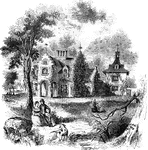
Sunnyside
"View of 'Sunnyside,' the residence of Washington Irving. Built by Wolfert Ecker and known famously…
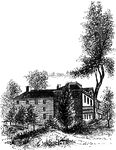
Livingston Mansion
"The Livingston Mansion. This is a view from the lawn on the north side. It is embowerd in trees and…
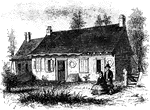
Tappan head-quarters
"Washington's head-quarters at Tappan. This view is from the yard, near the well. The date of its erection…
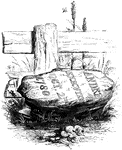
Andre's Execution
"Place of execution. The place of Andre's execution is now designated by a stone, lying on the right…

Torn Rock
"Torn Rock. This view is from the verge of the dam above the Ramapo works, near the rail-way, looking…
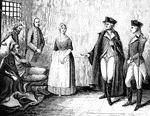
Colonel Rall
"Washington's visit to Colonel Rall. This is a copy, by permission, of a picture by Flagg, in the possession…
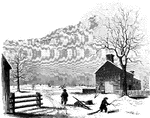
Princeton battle-ground
"View of the battle-ground near Princeton. This view, looking north, is from the carriage gate of Mr.…
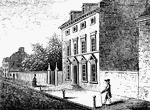
Howe's Quarters
"General Howe's quarters were in a house on High Street, one door east from the southeast corner of…

Washington's head-quarters
"Washington's head-quarters. This view is from the Reading rail-road, looking east, and includes a portion…
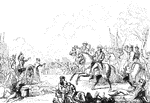
Monmouth
"The field of Monmouth. In the picture here given, the chief is seen most prominently on his white charger,…

Monmouth Battle-Ground
"Battle-ground at Monmouth. This view is from the orchard, upon the site of Wayne's position when Monckton…

Washington Monument
"Washington Monument. The following are the inscriptions on the monument: East front: 'To George Washington,…
